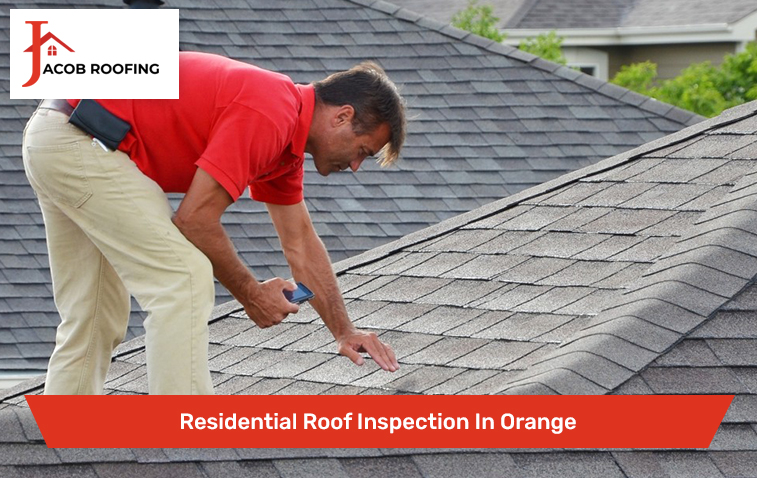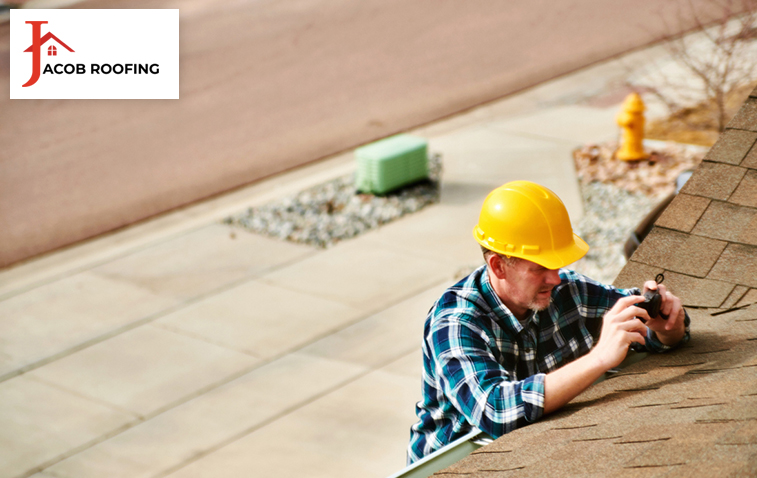The Different Strategies for Roof Inspection
There are several strategies that can be employed for residential roof inspection in Orange, depending on the specific circumstances and requirements. Here are some common strategies used for roof inspections

Visual Inspection
This is the most basic and commonly used strategy for roof inspection. It involves a thorough visual examination of the roof from various angles to identify any visible signs of damage, such as cracked or missing shingles, sagging areas, or worn-out flashing.
Interior Inspection
This strategy involves inspecting the interior of the building, particularly the attic or crawl space, to check for signs of roof leaks, water stains, mold growth, or other indications of roof damage. This can help identify issues that may not be immediately visible from the exterior.
Thermal Imaging Inspection
Thermal imaging cameras can detect temperature variations on the roof surface, helping to identify areas of heat loss, insulation problems, or hidden moisture issues. This technique is especially useful for identifying roof leaks or insulation deficiencies.
Moisture Testing
Moisture meters or infrared moisture scanning devices can be used to detect moisture levels within the roof layers. By identifying areas with excessive moisture, inspectors can pinpoint potential leaks or areas of water intrusion that require further investigation or repair.
The Different Parts of the Roof We Help You to Inspect
Here’s a table outlining common parts of a roof that are typically inspected by your team, along with the common signs of damage they may look for:
| Roof Part | Common Signs of Damage |
|---|---|
| Shingles | Missing, cracked, or curled shingles |
| Flashing | Corrosion, rust, or gaps in the flashing |
| Gutters and Downspouts | Clogs, sagging, detached or damaged gutters |
| Ventilation | Insufficient airflow, condensation, or mold growth |
| Chimney and Vents | Cracked mortar, loose bricks, damaged flashing |
| Skylights | Leaks, cracked or fogged glass, damaged seals |
| Eaves and Soffits | Rotting, cracking, or peeling paint, insect or animal damage |
| Roof Deck and Substructure | Sagging, rotting, water stains, weakened or damaged wood |
Core Sampling – An Effective Test for Your Roof
Core sampling in roofing inspection is a technique used to assess the condition and composition of roofing materials by extracting small samples from the roof layers. It is one of the most common techniques we use for residential roof inspection in Orange. It involves drilling a small hole through the roofing material and collecting a core sample for analysis. Core sampling is usually conducted in areas of concern or suspected damage to gather accurate information about the roof’s structure, layers, and potential issues.
Here is the process Jacob Roofing follows for core sampling
Preparation
We will conduct a visual inspection of the roof to identify areas of concern or suspected damage that warrant core sampling. This helps determine the appropriate locations for sampling.
Equipment Setup
The necessary equipment for core sampling, such as a drill with a core bit, safety gear, and sample collection containers, will be prepared. Safety precautions, such as using personal protective equipment (PPE) and securing the work area, will also be taken.
Sample Location Determination
Based on the visual inspection findings, we will select specific locations on the roof for core sampling. These areas may include spots with visible damage, suspected leaks, or representative sections to provide an accurate assessment.
Core Sampling
Using a drill with a core bit, we will carefully drill into the roof surface to extract small cylindrical core samples. The depth of the sample will depend on the roofing layers being evaluated.
Sample Collection
The extracted core samples will be collected in appropriate containers or tubes, ensuring proper labelling and identification to track their location and corresponding roof section
Laboratory Analysis
The collected core samples are sent to a laboratory for analysis. The samples may undergo various tests, such as moisture content analysis, material composition analysis, or strength and integrity assessment, depending on the specific goals of the inspection
Report and Assessment
Once the laboratory analysis is complete, we will review the findings and incorporate them into a comprehensive inspection report. This report will outline the condition of the roofing materials, identify any issues or areas of concern, and provide recommendations for repairs, maintenance, or further actions. Get in touch to understand the report in details.
Safety Precautions We Follow During Residential Roof Inspection in Orange

Use Personal Protective Equipment (PPE)
Our inspectors always wear appropriate PPE, including safety helmets, safety glasses, gloves, and non-slip footwear. PPE helps protect against head injuries, eye injuries, hand injuries, and slips or falls
Secure Ladders and Access Points
The team ensures that ladders or other access points used to reach the roof are securely positioned and stable. We use ladder stabilizers or safety devices to prevent the ladder from shifting or slipping.
Assess Roof Conditions
Before stepping onto the roof, we visually inspect its condition. We look for any signs of damage, weak spots, or potential hazards. The team avoids areas with loose or unstable materials, steep slopes, or wet surfaces
Maintain Proper Footing
The team walks carefully and deliberately on the roof, paying attention to your footing. Use caution on steep slopes or roofs with slippery surfaces. Avoid stepping on fragile or unsupported areas that may lead to falling through the roof
Fall Protection
When working near roof edges or steep slopes, we utilize fall protection measures such as safety harnesses, guardrails, or safety nets. These systems help prevent falls and provide a backup in case of accidental slips.
Weather Conditions
We consider the weather conditions before conducting a roof inspection. Avoid inspecting roofs during inclement weather, such as heavy rain, strong winds, or icy conditions, as they can increase the risk of accidents
Tools and Equipment
We use appropriate tools and equipment for the inspection. Ensure they are in good working condition and suitable for the task at hand
Electrical Safety
We are always mindful of electrical hazards when inspecting roofs with electrical installations or near overhead power lines
Communication
We establish effective communication methods to ensure everyone is aware of their roles, actions, and any potential hazards
Training and Experience
Our team is properly trained, experienced, and knowledgeable about roof safety practices. If necessary, seek assistance from professional roofing contractors or inspectors.
